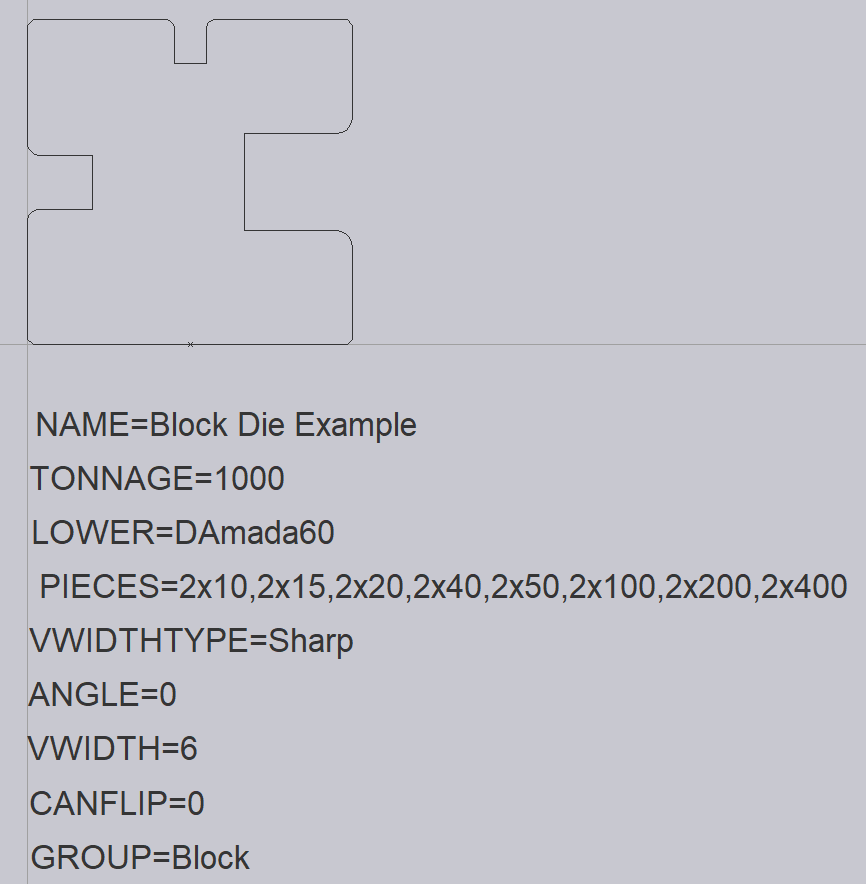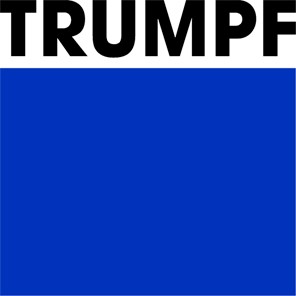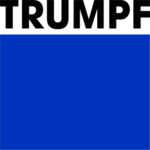Block Die
Below, we can see a sample Block Die DXF drawing. A side view profile of the tool is drawn. An origin reference point will need to be placed at the mounting point on the side profile of the tool.

The following text entities are required for a Block Die:
NAME – This is the name given for the tool.
TONNAGE – This is the tonnage of the tool in kN.
LOWER – This is the lower die valency of the tool.
PIECES – These are the required tool lengths. These are separated by a comma, and if more than one is required, we can use a multiplier to specify the value required.
VWIDTHTYPE – This is necessary for dies whose V-width definition does not match with Trumpf. In this case, it is measured from the theoretical sharpness of the die.
ANGLE – For a block die, this is set to 0.
VWIDTH – This is the width of the V for the die. In this example, we can see that it measures 6mm.
CANFLIP – If the tool can be flipped when mounted, this should be set to 1.
GROUP – This can be used to specify the tool group that this tool would belong to. In this case, it is Block.

